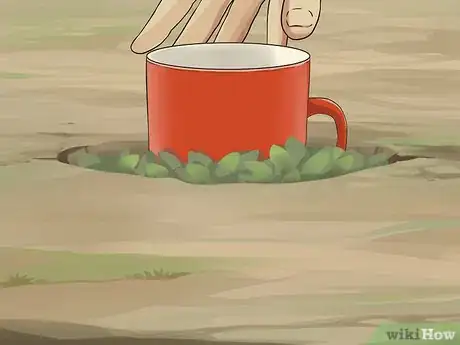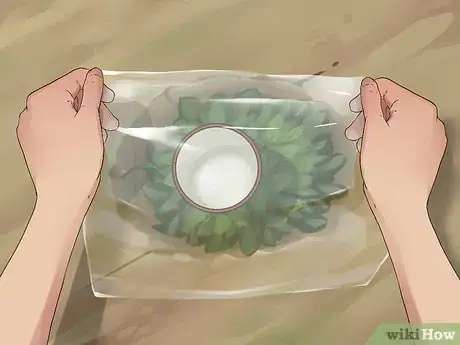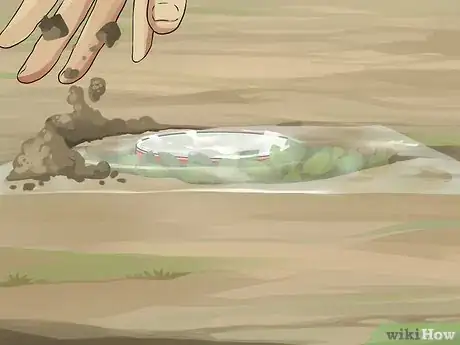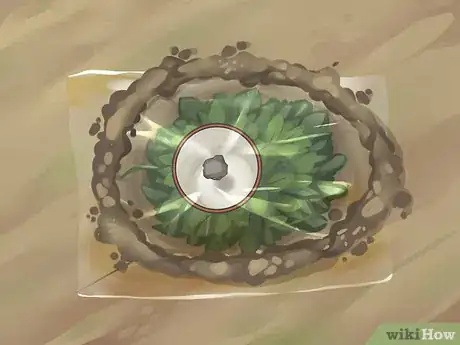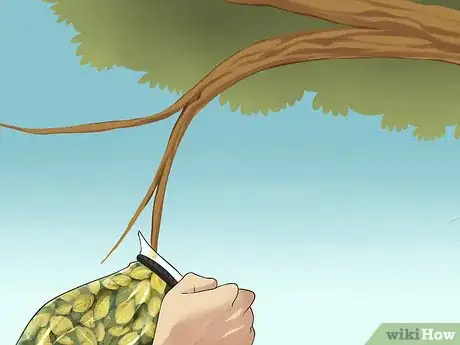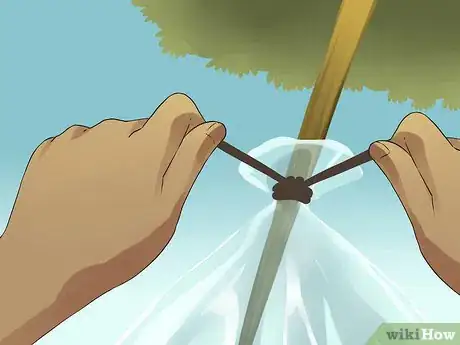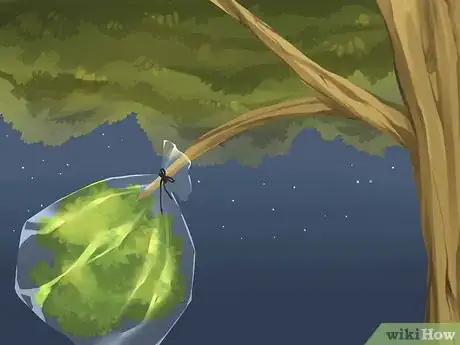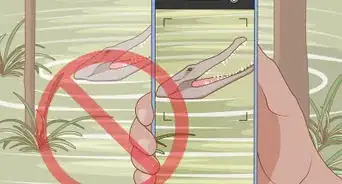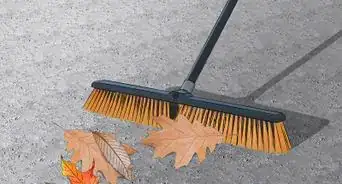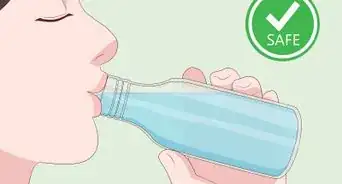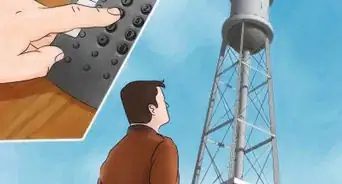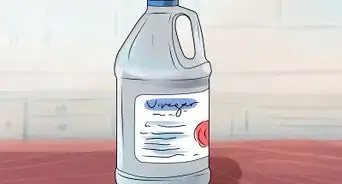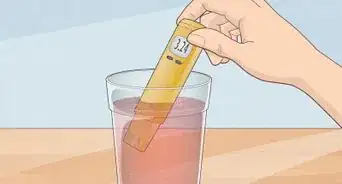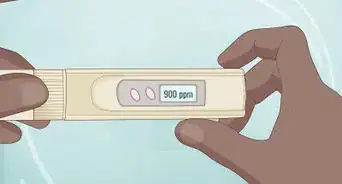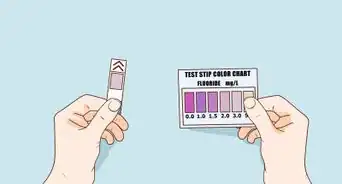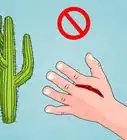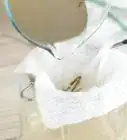wikiHow is a “wiki,” similar to Wikipedia, which means that many of our articles are co-written by multiple authors. To create this article, 112 people, some anonymous, worked to edit and improve it over time.
This article has been viewed 712,839 times.
Learn more...
Dehydration can set in quickly in the desert. If you are lost in a barren landscape you can actually extract water from soil or plants through the process of condensation, using the techniques described below. It's not really "making" water, but it'll be lifesaving nonetheless.
Steps
Pit-style Solar Still
-
1Survey the land for signs of dried out river beds. These locations are the best place to seek moisture.
-
2Dig a few curved holes (the more the better) about 19 inches (50 cm) deep so that the moist subsoil is clearly visible.[1]
- If you are in dryer conditions, the moist subsoil may be slightly deeper. Dig until you find it.
- Do not dig the hole/holes in the shade. This process needs direct sunlight to work correctly. Look around and make sure that shade won't move over your solar still before evening arrives.
Advertisement -
3Throw any non-poisonous plants into the hole/holes.[2]
-
4Place an open coffee can, mug, cup or canteen in the center of each hole.[3]
- If you have a length of plastic tubing, you can run it from the bottom of the coffee can out the edge of the hole. You can use the tubing to suck the water from the can without dismantling the still.
-
5Lay a taut piece of clear plastic wrap across the top of each hole.
-
6Create a seal by pouring sand in a circle around each hole along the outside of the plastic wrap.
- Pour the sand 1 to 2 inches (2.5 to 5 cm) from the edge of the plastic wrap. Ensure that there are no gaps. The plastic wrap must seal the hole shut; if it is punctured, the water will not condense.
-
7Place a small to medium sized rock in the center of the plastic wrap so that the plastic wrap dips to a point above the can.[4] Keep the plastic wrap from touching the can or else the water will not drip into the can.
-
8
-
9Once the sun dries the subsoil in a hole, just dig another. Alternatively, you may dig deeper using the established hole/holes.
Plant Condensation
-
1Using 550 paracord (or similar material), tie a clear plastic bag on the end of a plant or small tree branch. Do not use tape - the heat will prevent the tape from adhering effectively to the bag.
-
2Make sure the bag is sealed as tightly as possible around the branch. The plant transpires water during the process of transpiration.
-
3Water vapor will collect and condense in the bag. Make sure the water collecting in the bag won't drip out.
-
4Wait until evening for maximum condensation before removing the bag.
-
5Switch the bag to another branch and repeat.
-
6Expected yield is one cup of water per large bag - you will need several of these to survive.
Warnings
- You may lose more water perspiring while digging than the still will generate for you in the end, depending on the moisture in the soil, how hard the soil is to dig, and what you're digging it with.⧼thumbs_response⧽
- Contrary to what is written in some popular survival books, the solar still will not provide adequate water to keep a person alive, even if it is constructed in moist soil. It is the last resort.⧼thumbs_response⧽
References
- ↑ https://www.beprepared.com/blog/15865/diy-solar-still/
- ↑ https://www.youtube.com/watch?v=5CPNiIF2CIY
- ↑ http://www.practicalsurvivor.com/solarstill
- ↑ http://www.practicalsurvivor.com/solarstill
- ↑ https://worldwaterreserve.com/potable-water/purification/how-to-make-a-solar-still/
- ↑ http://en.wikipedia.org/wiki/Solar_still
- ↑ http://www.desertusa.com/mag98/dec/stories/water.html
About This Article
The easiest way to make water in the desert is through condensation. Dig a 19-inch (50-cm) deep hole in a dried out river bed, then fill it with leaves and a mug or cup. Cover the hole with plastic wrap, seal the edges with dirt, and place a stone in the center of the plastic wrap. Wait for the water to condense into the mug or cup. To learn about how to collect water from a living desert plant, keep reading!



